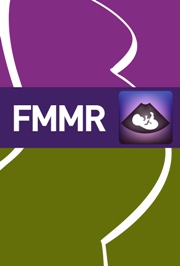No CrossRef data available.
Article contents
OBSTETRIC ANTIPHOSPHOLIPID SYNDROME - A REVIEW
Published online by Cambridge University Press: 03 November 2011
Extract
The Antiphospholipid syndrome (APS) is one of the current hot topics embracing rheumatology and obstetrics.
The first clinical description of APS was in 1983. Venous or arterial thrombosis, abortion and cerebral manifestations along with circulating antibodies were the first described hallmarks of the syndrome. In the following years other clinical features, which include pregnancy complications, such as recurrent miscarriages (RM), pre-eclampsia or severe placental insufficiency were described.
- Type
- Review Article
- Information
- Copyright
- Copyright © Cambridge University Press 2011


